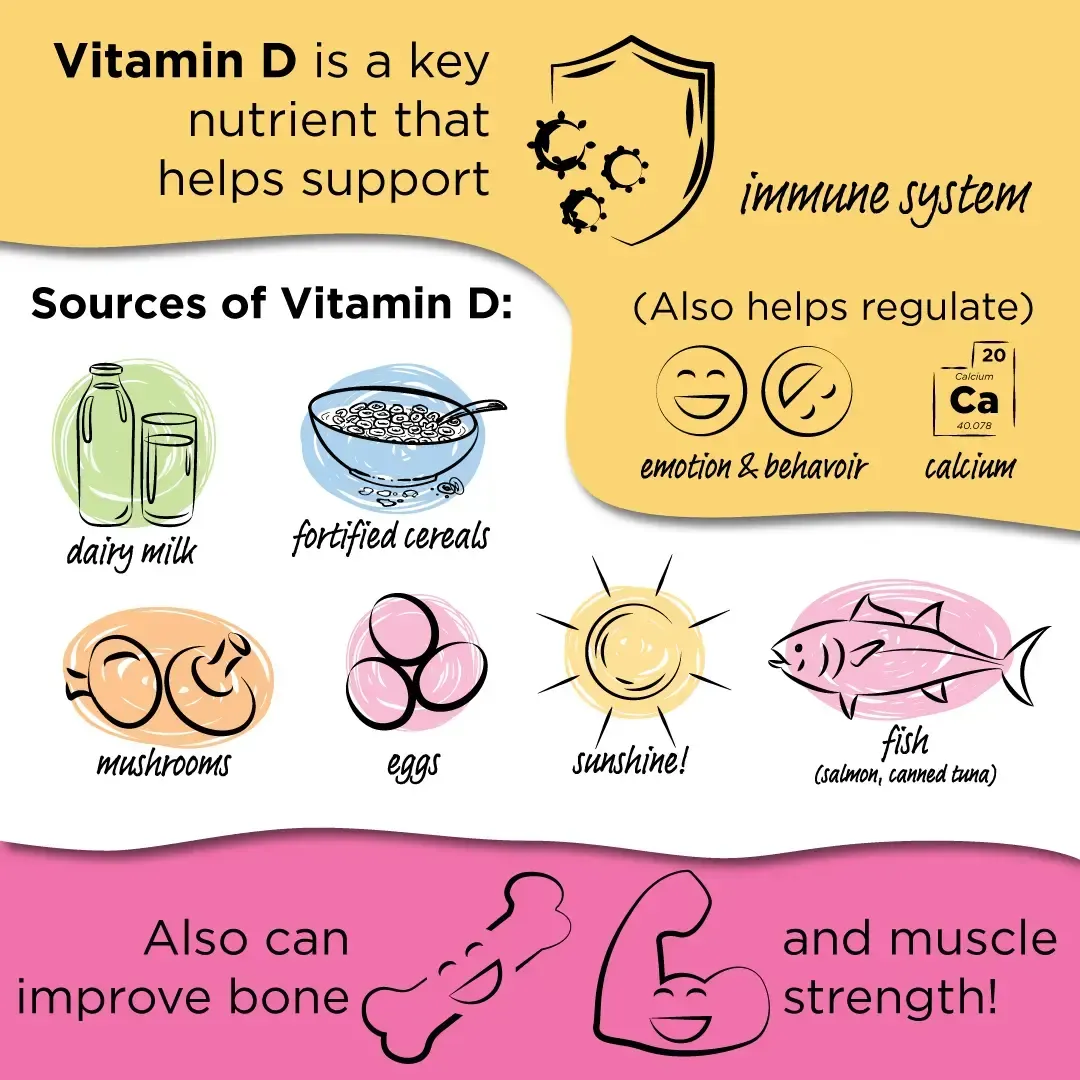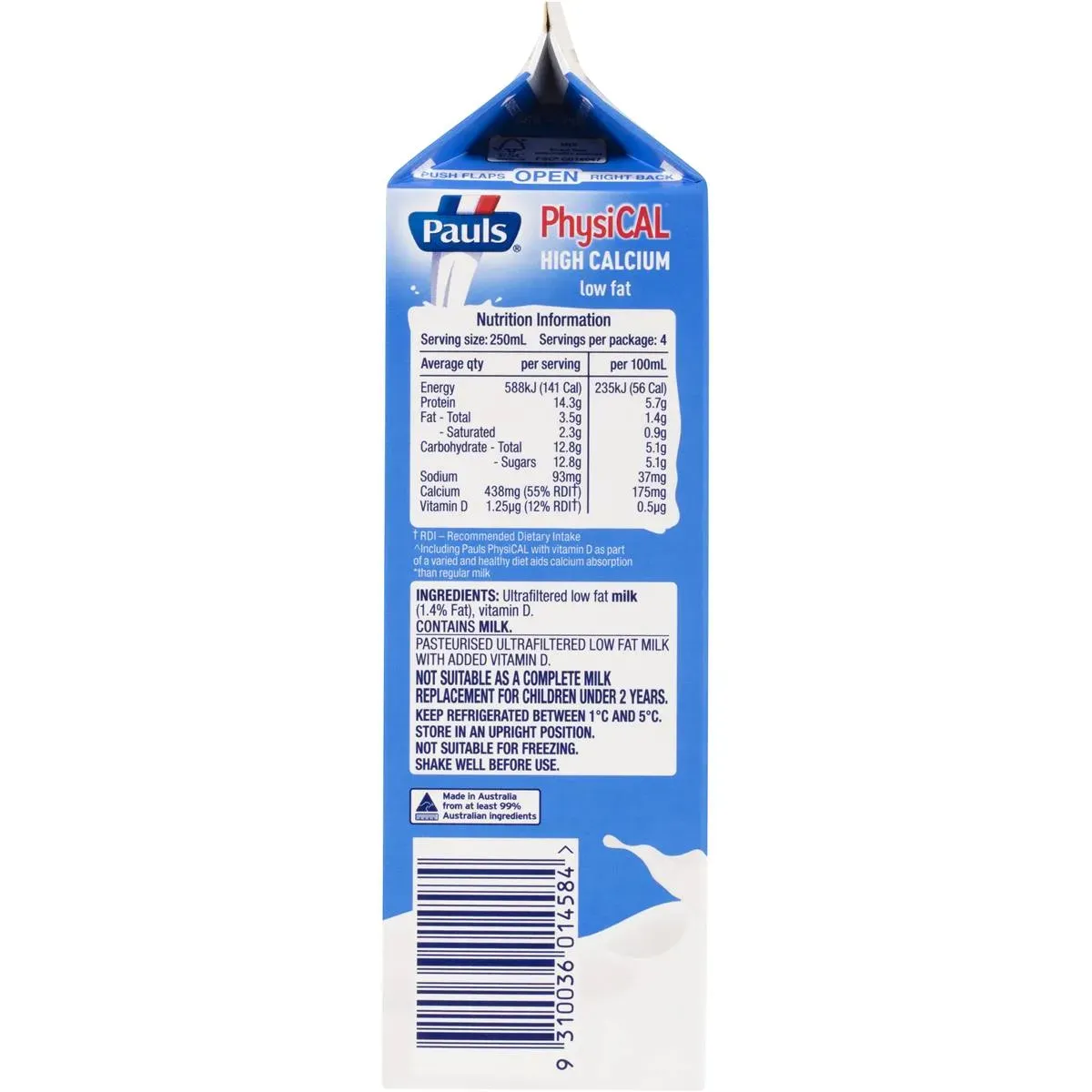Table of Contents
Ever wonder if you're actually getting enough vitamin D? It’s a nutrient often called the "sunshine vitamin," but relying solely on the sun in many climates is a gamble. And let's be honest, who isn't looking for simple ways to support their bones and overall health? This is where everyday foods step in, and one common player is milk. Specifically, the role of vitamin d in low fat milk has been a point of interest for decades, largely due to fortification efforts aimed at boosting public health. You might grab a glass without a second thought, but understanding what that added vitamin D actually does for you, how much is in there, and whether it's truly making a difference is key. Is your daily low-fat milk doing enough heavy lifting for your vitamin D needs? We’ll look at why this combination became standard practice, what the science says about its effectiveness for things like bone strength, and how it stacks up against other sources. Stick around to sort fact from fiction and figure out if your low-fat milk carton holds a significant piece of your nutritional puzzle.
Why Vitamin D Matters for Your Body

Why Vitamin D Matters for Your Body
So, you're diving into this vitamin D rabbit hole? Good. Because honestly, this little nutrient does way more than just hang out. Think of it as the bouncer at the calcium party in your body. Without enough vitamin D, calcium and phosphate – the building blocks of strong bones – can't get absorbed properly in your gut. They just... pass through. This isn't just about avoiding rickets, which sounds like something from a history book anyway. We're talking about maintaining bone density as you age, reducing the risk of fractures, and generally keeping your skeletal structure from resembling Swiss cheese. It also plays a role in muscle function and immune system health, though perhaps not quite the superhero cape some folks imagine. But seriously, weak bones? Nobody's got time for that.
Here's a quick rundown of what Vitamin D actually does:
- Helps your body absorb calcium and phosphate.
- Crucial for building and maintaining strong bones.
- Supports muscle movement.
- Assists your immune system.
Getting Your Vitamin D from LowFat Milk

Getting Your Vitamin D from LowFat Milk
Alright, so you're wondering how your average carton of low-fat milk fits into this vitamin D picture? It's pretty straightforward, actually. Back in the day, folks realized many people weren't getting enough vitamin D, especially during winter months or if they lived further from the equator. Fortifying milk, a widely consumed staple, seemed like a no-brainer way to tackle this. So, most milk sold in the US, including the low-fat varieties, is voluntarily fortified with vitamin D. We're usually talking about 400 International Units (IU) per quart, which breaks down to about 100 IU per cup. It’s not a massive dose, sure, but for many, especially kids and those with limited sun exposure, that daily glass or two of low-fat milk provides a consistent, easy contribution to their vitamin D intake, working alongside whatever else they might be getting.
Comparing Vitamin D in LowFat Milk to Other Dairy Options

Comparing Vitamin D in LowFat Milk to Other Dairy Options
Low-Fat vs. Whole Milk: Is There a Difference in D?
So, you’re eyeing the dairy aisle, wondering if grabbing the 2% or skim carton means you're missing out on that vitamin D goodness compared to whole milk. Here's the punchline: not really, at least when it comes to the *added* vitamin D. Milk fortification is typically standardized across different fat levels. Whether it's whole, 2%, 1%, or skim, if the carton says "fortified with Vitamin D," it usually contains that same roughly 100 IU per cup. The natural vitamin D content in milk fat is minimal anyway, so removing the fat doesn't significantly alter the vitamin D picture unless it's added back in. Your choice between low-fat and whole milk, from a vitamin D perspective, really comes down to the fat and calorie content, not the amount of this specific bone-helper.
How Does Low-Fat Milk Stack Up Against Yogurt or Cheese?
Now, what about other dairy players like yogurt or cheese? This is where the plot thickens a bit. Milk is the primary dairy product consistently fortified with vitamin D in the US. Yogurt and cheese? Not so much. While some brands might add vitamin D to their yogurt, it's not a universal practice like it is with liquid milk. Cheese contains very little vitamin D naturally, and fortification is rare. So, while yogurt and cheese are excellent sources of calcium and protein, you generally can't rely on them for a significant dose of vitamin D unless the label specifically states it's fortified. Your carton of vitamin d in low fat milk is generally a more reliable source of this particular nutrient within the dairy family.
Here's a quick look at typical Vitamin D content:
Dairy Product | Typical Vitamin D Content (per cup/serving) | Fortification Common? |
|---|---|---|
Fortified Low-Fat Milk | ~100 IU | Yes |
Fortified Whole Milk | ~100 IU | Yes |
Yogurt (unfortified) | Very Low | Sometimes |
Cheese (most types) | Very Low | Rarely |
Who Needs Extra Vitamin D? And Can LowFat Milk Help?

Who Needs Extra Vitamin D? And Can LowFat Milk Help?
Are You Running on Empty? Figuring Out Your Vitamin D Needs
So, who exactly should be paying closer attention to their vitamin D levels? It's not a one-size-fits-all situation. Older adults, for instance, often have reduced skin synthesis of vitamin D from sunlight and may not absorb it as efficiently from food. People with darker skin tones also produce less vitamin D from sun exposure compared to those with lighter skin. If you live in northern latitudes, especially during winter months, the sun's angle isn't strong enough for adequate vitamin D production for a significant part of the year. Certain medical conditions affecting fat absorption, like Crohn's disease or cystic fibrosis, can also impair vitamin D uptake. Even simply spending most of your time indoors puts you at risk. It’s worth considering these factors rather than just assuming you're covered.
Can That Low-Fat Carton Bridge the Gap?
Given that many people fall into one of those higher-risk categories, the question becomes: is your daily serving of vitamin d in low fat milk actually making a dent? For someone with minimal sun exposure and limited dietary sources, that 100 IU per cup from fortified low-fat milk is certainly better than nothing. It provides a consistent baseline contribution. However, the recommended daily allowance for most adults is 600-800 IU, sometimes more depending on age and circumstances. Relying *solely* on low-fat milk might require drinking six to eight cups a day, which isn't exactly practical or advisable for everyone. It’s a helpful piece of the puzzle, yes, but rarely the entire solution for someone with a significant deficiency or high needs.
Consider these groups who often need to monitor Vitamin D intake:
- Older adults (65+)
- Individuals with limited sun exposure (indoor workers, those in northern climates)
- People with darker skin
- Those with malabsorption conditions
- Breastfed infants (often need supplementation)
Making Sense of Vitamin D in Your Low-Fat Milk
So, we've looked at why vitamin D isn't just about sunshine and how it keeps your skeleton from turning into brittle twigs. Low-fat milk, thanks to widespread fortification, remains a readily available and relatively easy way for many people to get a regular dose of this crucial nutrient. While it's not the only game in town, and dietary needs vary wildly based on age, location, and lifestyle, a glass of vitamin d in low fat milk does contribute meaningfully to hitting those daily targets, especially for bone maintenance. It's a piece of the puzzle, not the whole solution, but a piece that's been intentionally placed there to help keep populations healthier. Don't expect miracles from one carton, but recognize its role in the broader dietary landscape.
